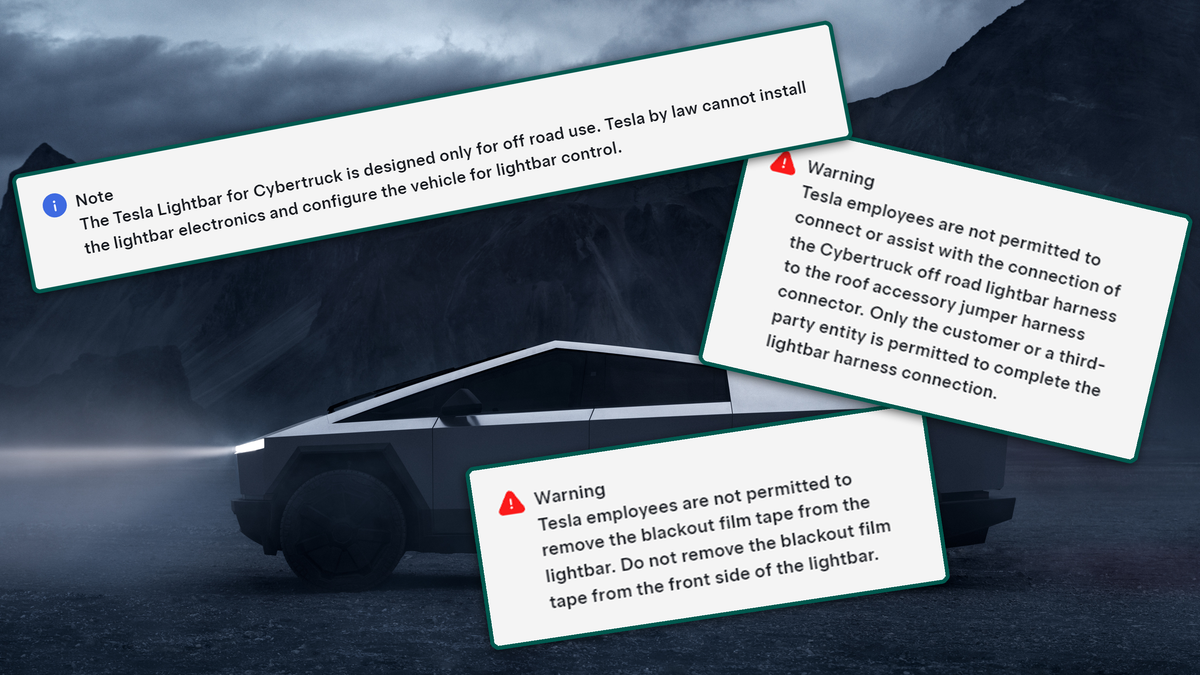
Tesla Cybertruck fans are raving about the truck’s latest OEM accessory: A light bar that sits atop the windshield and blinds all oncoming traffic with its copious lumens. The light bar only has one real problem — it’s illegal for street use, and it’s illegal for Tesla to even install it on your shiny new truck.
Marques Brownlee posted about his Cybertruck’s light bar on Twitter, mentioning that his lights arrived only partially installed — the front was covered with blackout tape, and the wiring ended in the cabin without ever touching a power lead. After delivering the car with the lights half-installed, Tesla sent Brownlee the name of a local shop that could finish the installation without getting Tesla in trouble.
This seems like an odd way to install an OEM accessory, but it’s actually entirely in line with Tesla’s service manual for the Cybertruck. The manual is absolutely slathered in warnings to Tesla technicians, telling them that they cannot under any circumstances finish the installation of the light bar themselves — a local shop has to do the wiring to keep Tesla’s involvement above board.
The wiring, by the way, is batshit here. The light bar connects to a Cybertruck “roof accessory jumper harness,” which might lead you to believe that the truck has unused wiring connectors read to be hooked up. Nope! The “harness” is just three wires sticking out of the car’s roof, terminating in heat shrink tubing, that have to be soldered to the wiring for the light bar.
Solder, for those who have never worked on automotive wiring, is generally a bad idea in car accessories. Cars vibrate, especially cars that drive off-road — as one might expect from a truck equipped with a light bar that legally can’t be used on the street — and that vibration breaks solder joints all the time. Crimp connections or plugs are far preferable for their reliability, but crimp connectors and plugs cost money. Solder, supplied by a third-party shop that’s willing to install street-illegal accessories on a brand new Cybertruck, doesn’t cost Tesla a dime.
Not only is Tesla’s workaround shady, using local shops to evade the law on street legality, but the actual wiring in the Cybertruck is just as sketchy. Wires that functionally sit outside the vehicle — covered only by a thin piece of metal atop the roof — are just twisted and soldered rather than crimped or plugged. Really, this light bar is about as apt a summary of Tesla as any accessory can be: Poorly engineered and questionably legal.


